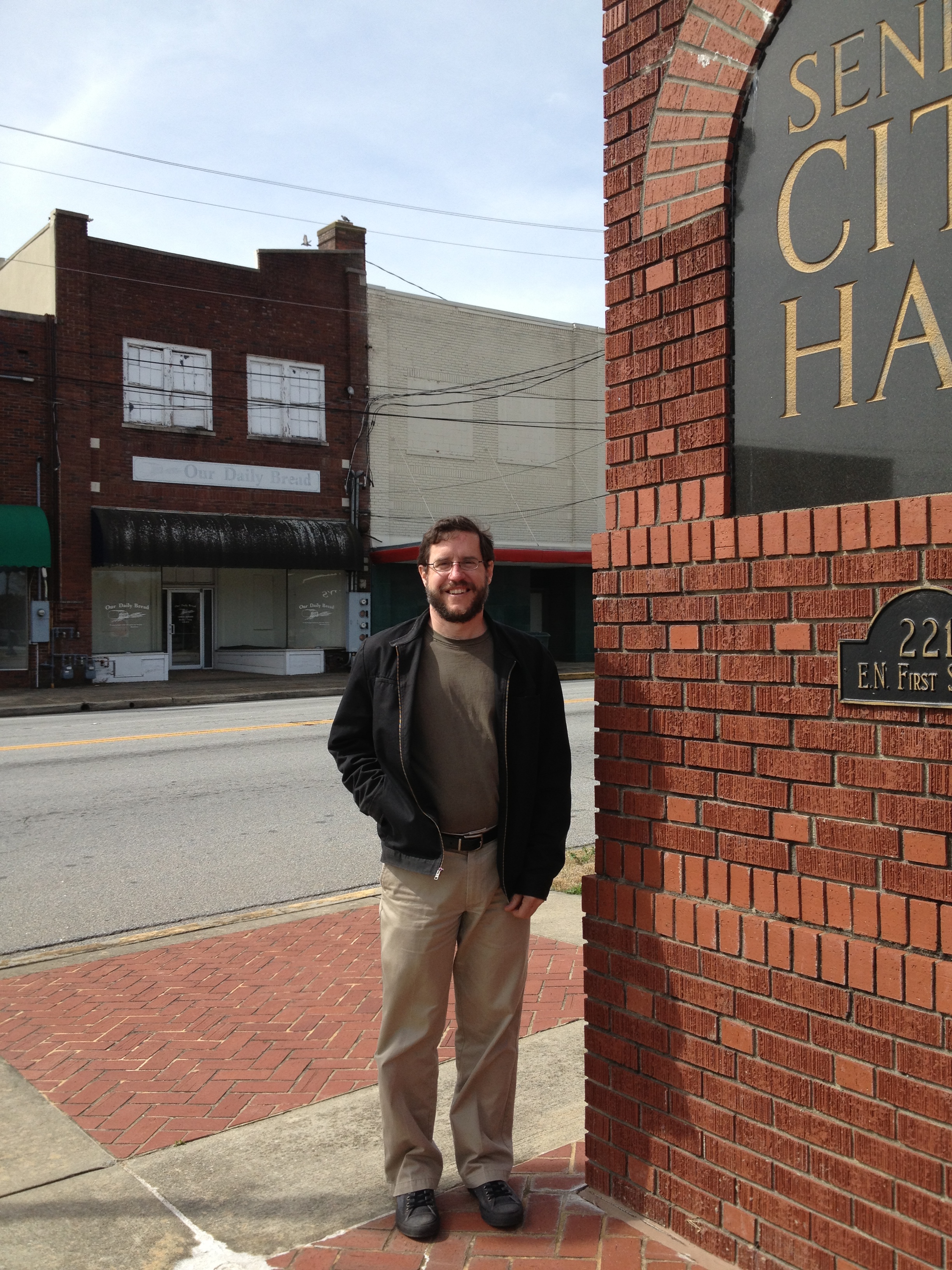As part of a series of articles on the duties and responsibilities of municipal employees, we spoke with four planning directors. Whether they oversee large departments with a number of divisions, or they alone represent the entire department, city planners have the opportunity to shape the face and future of a municipality.
Krista Hampton has been director of Planning and Development Services for the City of Columbia for more than two years. Previously, she worked in zoning, historic preservation and the city's Development Center. Hampton advises city administration and acts as a resource to division managers in the areas of planning, zoning, building inspections, property maintenance and development coordination.

"The vision of the Planning and Development Services Department is to facilitate a safe, attractive, healthy and vibrant community for present and future generations."
Krista Hampton, director of planning and development services, City of Columbia
In addition to the usual administrative tasks, Hampton's work entails such things as making presentations to council, meeting with developers, writing ordinances and researching policies. Her days often are filled with tasks as varied as talking about mosquito abatement in the morning, discussing the design of a sign in the afternoon, and presenting a large-scale rezoning application at the evening council meeting.
It's a slightly different situation for Camden City Planner Shawn Putnam. He is the sole person on the planning staff.
"Our building official is the zoning administrator, so he issues zoning permits, but I handle everything else, including staffing the planning commission and board of zoning appeals," Putnam said. "In a small town, you have to be more of a generalist, whereas in a larger town you can have staff that focus on certain areas such as long-range planning. You also have a greater need to use consultants in a small town due to the lack of staff."
Putnam has been in his job for five and a half years, having previously worked for the state Department of Parks, Recreation and Tourism; the state Emergency Management Division; and the state Department of Natural Resources. A typical day for him can include answering questions on requirements for zoning or subdivisions, managing GIS data, preparing for and attending meetings, coordinating with other departments on projects, and reviewing subdivision and land development applications.
In the City of Seneca, there are no "typical" days at the office for Planning and Community Development Director Ed Halbig.

"There are days when you have to administer multimillion dollar grant projects, meet with state and federal officials, then find the beaver dam that is causing your stormwater headaches."
Ed Halbig, planning and community development director, City of Seneca
"There are days when you have to wear both hiking boots and a necktie," Halbig said. "There are days when you have to administer multimillion dollar grant projects, meet with state and federal officials, then find the beaver dam that is causing your stormwater headaches."
Halbig has been Seneca's planning director for 10 years. He started his career in a city of 50,000 in Florida, worked in Georgia as a circuit planner with a regional commission and later as a metropolitan planning organization director.
"Traveling between small Georgia towns was like visiting families, and I knew then that I wanted to settle down with a city family I could call my own," Halbig said.
Working for a smaller city means everyone must pitch in, Halbig said.
"I know that in other levels of government, your job description is much narrower, and I-ve worked in situations where people relished saying, "It's not my job." That doesn't work in local government or a small town setting," he said. Everyone should be willing to be hands-on for any job, he explained. "My mantra here is that if it's not in a trash dumpster or on fire, it's our responsibility - even if our responsibility is only to help the public find the right kind of help."
At times, Halbig has taken on the responsibility of scheduling vendors for weekend festivals, mediating the farmers" market, and even directing traffic for a half-marathon. Halbig said he doesn't mind the extra duties, as he believes a planning professional is there to serve his community in any necessary capacity.
Sometimes cities are too small or cannot afford to have even a single person on the planning staff. As senior planner for the Appalachian Council of Governments, Jennifer Vissage has had the unique experience of assisting numerous towns with planning.
Vissage has been with the COG for 12 years, first in the grants services department then in the planning department for the last six years. The planning department has contracts with local towns and cities to do many things, including updating zoning ordinances and comprehensive plans.
They also can staff a city planning department when the city cannot afford to have its own full-time staff. Vissage has done just that with the Town of Pendleton and, currently, the City of Pickens. She goes to the Pickens City Hall at least once a week to deal with zoning issues, process sign applications, and staff the boards of planning, architectural review and zoning appeals.
A typical day for Vissage in Pickens includes setting up agendas and information packets for all the boards; taking minutes for the boards; reviewing applications for signs, zoning compliance or fa-ade improvements; reviewing building and site plans; meeting with business owners; and dealing with code enforcement issues.
Vissage said she's been surprised about how poorly people often treat city employees and how upset people get over regulations. However, she finds it rewarding to drive through town and see firsthand the successful development and small businesses that have come as a result of her work.
"It is helping the town with economic development, growth and creating jobs," she said. "It makes me feel like I have done something."
Trends in planning have changed greatly over the years. Putnam noted that the integration of GIS into planning has been a helpful addition. Mapping data can make it much easier to understand, particularly for the public, he said.
"A very positive change is that we are returning to a focus on how our cities are designed and the impact good design has on everything from economic development to health, and from the environment to transportation," added Hampton, of Columbia. "This includes a focus on what kind of places we create through planning and that they should be places of value for all users."
While the demand for planners to "make life better" has not changed, the way that planners meet that demand changes constantly, Halbig said.
"Where once "better" meant more space for yards and cars, now it means taking the "old" urbanism of a town born before the automobile and making it an attractive living alternative in an age where fuel costs and commute times are vigilantly watched," he said.
The planners said they face challenges trying to meet those demands, from mediating conflict among stakeholders to dealing with the perception from the public that government workers are merely bureaucrats who want to enforce regulations.
"People are surprised to learn that the things we do, we do because the majority of the local people have decided that it's good," Halbig said. "Whether it's following the zoning regulations or finding funding for a new project, we act not for the city officials but for the people of the area."
In the end, the most rewarding part of the job is seeing plans implemented, Putnam said.
"Some plans take a long time to complete," he said. "Seeing projects in those plans completed makes all the work feel very worthwhile."
Hampton said her greatest satisfaction is in making a positive impact on her city.
"The vision of the Planning and Development Services Department is to facilitate a safe, attractive, healthy and vibrant community for present and future generations. I feel very fortunate to work with a terrific group of people who come to work every day and take small or big steps toward achieving that goal," she said.
